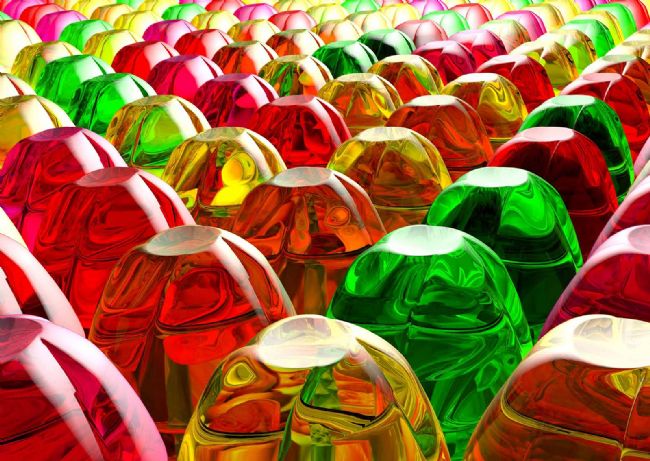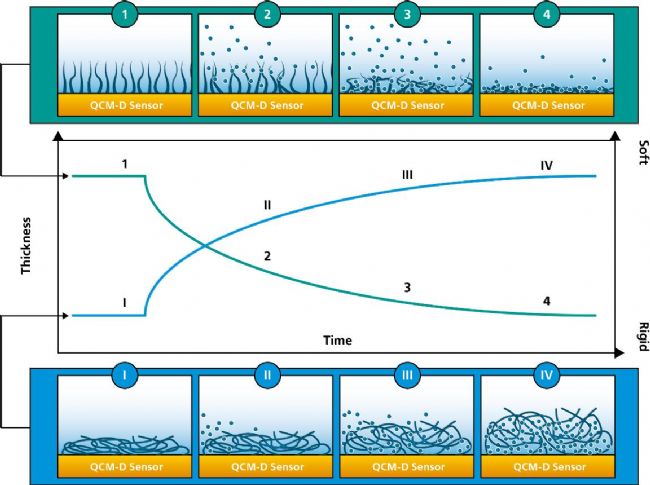What is a dissipative quartz crystal microbalance? A special "balance" tailored for weighing very small masses and soft materials QCM-D, short for Dissipative Quartz Crystal Microbalance, is essentially a balance suitable for weighing very small masses. The dissipative quartz crystal microbalance (QCM-D) is an extended version of the quartz crystal microbalance (QCM), a technique used since the 1960s to measure surface quality changes in vacuum or gas phase. QCM technology can measure the quality of adsorption or loss on the surface of the chip in real time, so it is very suitable for measuring the formation rate and thickness of the film during film deposition such as electronic semiconductor devices or optical films. Different QCMs are suitable for different types of films Films deposited in vacuum or in the vapor phase are typically very thin and hard, which makes them ideal for studying and outputting parameters with QCM. In this case, the change in the resonant frequency is linearly related to the change in the surface quality of the chip. In other media, such as liquids, or other types of softer adsorption layers, such as adsorption layers formed by biomolecules. Standard QCM does not apply due to the test principle that is limited by the nature of the film. However, QCM-D is an extended version of QCM that is particularly useful for characterizing soft-adsorbed layers. Due to the addition of the measurement of the dissipative signal, the quality and thickness variations of the soft adsorbent layer can also be measured quantitatively. What kind of adsorption layer is soft? Soft adsorbent layers are typically composed of biomolecules, polymers, soils, such as grease, or any other type of material that does not have solid properties. There are also some "hard" molecules (the molecules themselves are rigid) that have an adsorption layer similar to soft film properties on a macroscopic scale formed by solvation or hydration. An example of this, such as cellulosic fibers, appears to be rigidly adsorbed on the surface in the dry state, but expands when exposed to water and forms a soft layer of hydration. Exploring the conversion between the rigid adsorption layer and the soft adsorption layer Just now, we have discussed the QCM-D for characterizing the quality and thickness of soft films. This information is related to whether the surface is interacting and quantitatively characterized. Questions such as "How much material is adsorbed to the surface?" or "How much is it detached from the surface?" "How fast is this process?" The softness of the film can also be measured using QCM-D. This information can be used to analyze the arrangement of molecules adsorbed on the surface. For example, they are formed in a tighter arrangement or are more loosely distributed on the surface. Whether they lie flat on the surface or extend out. Since softness is measured as a function of time, molecular structural changes, such as swelling or cross-linking processes, can be detected and tracked in a fixed process, as shown in Figure 1. The green illustration (above) shows a layer of cross-linking or folding. Initially, the molecules are arranged in a loosely stretched state to form a hydrated layer. When cross-linking occurs, the molecules fold and form a thin, hard adsorbent layer on the surface, and the green curve in the figure illustrates the change in thickness. The blue illustration (below) shows the opposite effect. Initially, the surface has a thin, hard layer that then expands thick and soft, and the blue curve in the figure illustrates the change in thickness. An HGH pen injector is a medical device used to administer human growth hormone (HGH) through injection. It is a small, portable device that resembles a pen, hence the name. The HGH pen injector is designed to make it easier and more convenient for patients to self-administer their medication. Hgh Pen Injector,Hgh Pen,Human Growth Hormone Pen,Rhgh Injection Pen Shanghai Enjosim Medical Technology Co., Ltd , https://www.enjosimmedical.com
 Figure 1. Schematic diagram of the inter-conversion process between dura and soft membranes detected by QCM-D
Figure 1. Schematic diagram of the inter-conversion process between dura and soft membranes detected by QCM-D
The HGH pen injector works by using a small needle to inject the medication into the subcutaneous tissue just below the skin. The device is pre-filled with a specific amount of medication, which is determined by the patient's doctor based on their individual needs.
The HGH pen injector is typically used by individuals who have a deficiency in growth hormone, which can lead to a variety of health problems. HGH therapy can help to increase muscle mass, reduce body fat, and improve bone density, among other benefits.
Overall, the HGH pen injector is a safe and effective way to administer growth hormone therapy for those who need it. However, it is important to follow the instructions provided by your doctor and to use the device properly to ensure the best possible results and minimize any potential side effects.